TeamLead Conf review: 2 days with 2 tracks, 25 reports, 474 participants, the pain is immeasurable
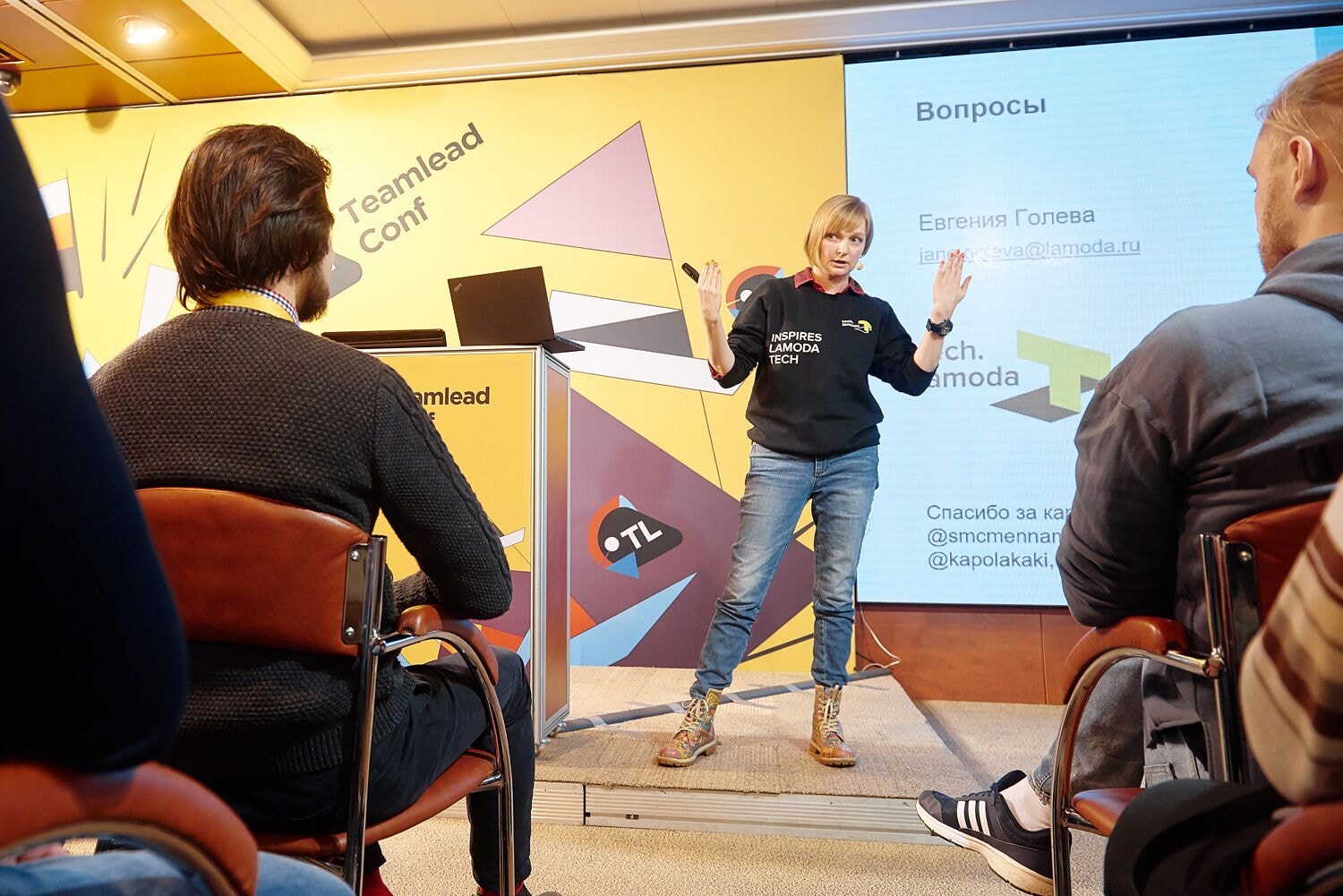
Let's start the story about tmlidah and timlidov with problems, pain, questions that may arise in large and small IT companies. After all, if we cannot formulate the tasks, then how are we going to solve them?
- Do I need tmlid?
- What is a team leader, what are his tasks?
- What is first: a team or team lead?
- Does team leadership need technical skills?
- Grow or hire?
- How to understand whether it is possible and necessary to grow from the engineer timlid?
- How long does it take to grow a timlid?
- Management role of team leader, which role is preferable?
- How important is emotional intelligence and social skills?
- What should I do if the manager himself is a technical specialist and is a pad man for micromanagement?
- Timlid left indefinitely (vacation, sick leave, force majeure), what to do?
- What if the team leaves for good?
- What should be the ratio of management and development in the work of the team leader?
- Is there a way back (and forward)?
- What are the career prospects of the team leader?
- What can prevent to become a tmlid?
- What is the difference between team lind and technide?
- How to identify an ineffective timlid at an early stage?
- How can a beginner team lid handle the flow of information?
- Need a formal or informal leader?
- Junior and Senior team leader, what are the differences and how to keep them in one team?
Such a flow of requests was given by the TeamLead Conf members to the round table. If you have already encountered some of them, then probably others can overtake you, there is something to think about.
')
Under the cut - an overview of the best reports TeamLead Conf with videos and presentations.
Anatoly Stoyanovsky (PricewaterhouseCoopers), Georgy Mogelashvili (Booking.com) and Roman Pavlushko (Avito) with the help of Alexander Ziz tried to find as many answers as they had in an hour.
A round table is a round table, that this is a kind of improvisation and it does not have a clear structure. But we still try to select from this discussion the most important thoughts.
Naturally, the very concept of a Tmlid in different companies is usually different. The first thing you need to determine exactly what his goals in your case . The novel called the two most common types: about competence or about the development process as a whole .
Timlid of the first type in the case of a religious war about the choice of a new technology, having the maximum competence, has the opportunity to insert its weighty word and send the entire team. In the second case, the goal is time-to-market , that is, the complete organization of the process, so that the solution of the problem reaches the user as quickly, efficiently and transparently as possible.
Seriously discussed the need for a technical background for the tmlid. Georgy said that in booking.com it is not necessary - the designer, copywriter, QA can become a team leader and while it works well. For a time, such a team will devote to managerial tasks, and some of its original work. Anatoly objected that engineers will not be able to manipulate an expert in their subject area, although in general, depending on the specific production process, if such a person is able to perform “subscript translation” and be responsible for the quality of the work of the whole team, it is possible.
The results of the round table were widely discussed in our telegram-chat called “The Pain of the Timlid”, now the chat works as an expert community of the Timlides. Get connected !Roman noted that this could be possible in very mature teams, and that he had never seen a team leader without a strong understanding of at least one of the areas of development that couldn’t disintegrate the whole process, including architecture, terms, quality and etc.
What soft skills are needed and how to develop them will be discussed in more detail further, but, in short, they are very important.
On the other hand, according to Anatoly, and the others agreed with him, the team should support knowledge of its subject area at least in the long term. It may be coding, some own projects, changes of role from time to time and so on, but this is very important. We live in an industry where for a couple of years of doing nothing, you can turn out to be a specialist, and a blank space, and coding is a relatively simple way to retain your competence.
But! The manager should have a goal - not to code , he should try to do everything by someone else. There was even such a strong thesis:
Delegate or die.The question of what to do if the superior manager himself is such a strong technical specialist, wants to impose his opinion and is fond of micromanagement, on the whole led to such an unexpected saying of Roman:
Peace management is bad, microservices are good.Our experts have not given any specific mechanisms for identifying tmlid. Basically you have to hope that there will be a person who will be more active than others involved in the process and more active than others to give feedback, and may take some additional responsibility. In booking.com for such workers a probationary period is provided for checking abilities and desires.
In Avito, there was the practice of a “tmlid on credit” for the most competent specialists who could train the team and followed those who were behind as technical leaders. But, unfortunately, there were several cases of very fast burnout and they refused it.
From this we can conclude for those who would like to grow up in a tmlid - first do it, then they will see you . That is, do not wait until you are clearly formulated and asked to solve the problem, start to notice them yourself.
As a result, becoming a team leader, you need to ensure that the team worked conditionally for a month without you . If they can do more, then the team is no longer needed, less - the organization is not perfect yet. The traditional advice to think about who will be your receiver, preferably in two versions at once, also sounded.
And then a few reports, with video, but also with annotations, so that you quickly navigate and see the most relevant for you.
How to build your professional way
Maxim Tsepkov presented two full reports. Now we will consider the self-determination schemes needed to successfully build your professional path, and the presentation of the second can be found on the author’s website. In order not to go deep into philosophizing, all reasoning will go into the metaphor of a person who swims in the stream of life and in the process scoops up to get where it should be. Moreover, it’s not self-determination, but calmly floating down the stream in such an interpretation - this is also self-determination .
Living in an era of change, the task of self-determination arises quite often, in general, with each new project. And when something needs to be done regularly, we understand that we are trying to automate the process and make it technologically advanced . Actually about the schemes that can be used for this and there was a report. It will be discussed, of course, about the professional component and self-determination in the company, which is understood at different levels in different ways: from getting comfortable and sorting out in a new unfamiliar place to becoming aware of common values and starting to do common things together and so on.
First of all, you need to draw an image of the future , but in this most beautiful future you must imagine yourself doing something and acting, otherwise it is someone else's future. This is not easy, but conference participants were offered at least 90 seconds in 90 seconds - and you could try. There are a lot of books about what to do with this image, and Maxim offers his own vision: how to hang up your created images and follow , and when the world has the opportunity to make a step there, and they usually open, and interestingly, then go. Such an approach is akin to entrepreneurial vigilance , which is rarely used in the key of self-determination.
And then there is a much more difficult step in presenting yourself in cooperation with what will surround you , and searching for answers to the questions: what to do, what you do, what you will give to others, what is required of you. The scheme from the presentation will probably help you to realize your development, because absolutely surely your profile will not completely coincide with what is required.

By the way, Maxim perfectly recorded the entire conference on facebook and made a squeeze on his website. We are very grateful to him for this and want to quote at least the beginning:
Two days, 09/09/02/2018 was at the new conference of Oleg Bunin for team leaders TeamLead Conf . 474 participants, and two tracks of very good reports. Very high level of content, the preparation of reports, the layout of the program. I have been to many conferences, I know quite a lot in IT, so the situation when reports in each slot carry valuable information for me cause reflections - a rarity. It was like that. And, I hope, further will not be worse. Because the path from the developer to the team is a hot topic. By the way, I do not specifically write “team leader”, because the modern team leader is not a classic leader. In general, team leaders are very different, primarily because companies are different, they have a very different distribution of responsibilities and responsibilities between employees, and, as a result, very different team leaders. And this diversity was fully represented at the conference.
Improve performance review
You can not ignore the report of Yegor Tolstoy on how Avito has a performance review , what specific practices are used, what are the results of the analysis of many thousands of estimates obtained, but not only. Of course, there will not be a universal framework that will suit any company with any structure and objectives.
The main value of the story is how gradually, in small steps, based on the collected data and feedback, the performance review process improved. Indeed, the practice of continuous improvement can be applied not only to people, not only to technologies, but to any process and this is very important.
There is no reason not to believe Egor that it’s correct to call the performance review a tool for measuring employee productivity, and that three parties are interested in applying it: the employee, the manager and the whole company . At this stop retelling and let you see the performance.
By the way, Egor leads a telegram channel ( https://t.me/leadgr ), in which he cites the most interesting articles, videos and news related to technical management (promises no more than three materials per day).
Management of a large distributed team
In his report, Alexey Kataev from Skyeng first of all speaks about the features related to the fact that employees not only rarely go to the office, or sit in buildings across the road, but also live in different cities. Despite the fact that some evangelism of distant work was present in the presentation, most of the techniques are quite universal and also effective when working in a single office.
According to Alexey, the main advantages of organizing a remote team are in the effectiveness of communications (and they often take more time than writing code), access to a large pool of highly qualified developers , and a good opportunity to retain them, since there are not many offers of remote work. It should be noted that since 87% of Skyeng employees are delighted with this format, there are considerable advantages for developers.
Let us dwell on some points in more detail. Cooperation usually begins with an interview and despite the fact that you cannot shake hands with a person while conducting a video interview , you can look at him, moreover, in a comfortable environment for him. A preserved record will allow you to: if necessary, consult with colleagues, not to re-interview when hiring another team, analyze the interview if an employee leaves, and identify errors that need to be avoided, review 360 interviewers, which can also be very useful .
Probably, the number one question for the organizers of distributed teams is how to control employees , because they will watch YouTube at home and no one will code. Hmm, as if in offices polls are denied access to the seals. Well, the answer Alexey - no way . In Skyeng, they are trying to ensure the transparency of the work of employees, and they came to the conclusion that you need to keep a daily worklog. Actual statuses, remaining estimates and backlog are also aimed at this and are not something important only in the remote format.
The second most common thesis is: the experts at the remote are sitting at home and simply doing tasks in Jira and they have no community, but in the office there is certainly a team. Alexey objects, and it is impossible to disagree with him, that, first of all, involvement provides communication . Therefore, they have a lot of communication in various formats. Using Hangouts (no camera-talking emoticons are required): daily meetings, planning and retrospectives, wimboxing and quarterly presentations. And the recent practice is also the CS championship - perfectly develops the team spirit, regardless of the type of company.
All types of communication, together with the fact that each ticket is formulated, starting with the problem that it solves, so that the developer immediately understands why he does this and which particular user problem he solves (also a generally applicable scrum practice), allows everyone to be about the course of everything you need.
And when the question already hung in the air, when you work there at all, you seem to be just doing what you are talking about, Alexey, first, gave a vivid example of his own time distribution, in which communication takes on average just over an hour a day, but this precisely allocated time, to which the infinite refinements of the neighbor on the table and conversations in the kitchen are not added.
Secondly, I noticed that communication in Slak is cheap, and live communication is expensive . Of course, online in itself does not guarantee that your communication will be effective, but the rulebook, including a clear channel structure on the principle “only your people should read your message,” and other paragraphs of the convention will make it so.
Below is a slide with recommendations - these tools can be useful to you.
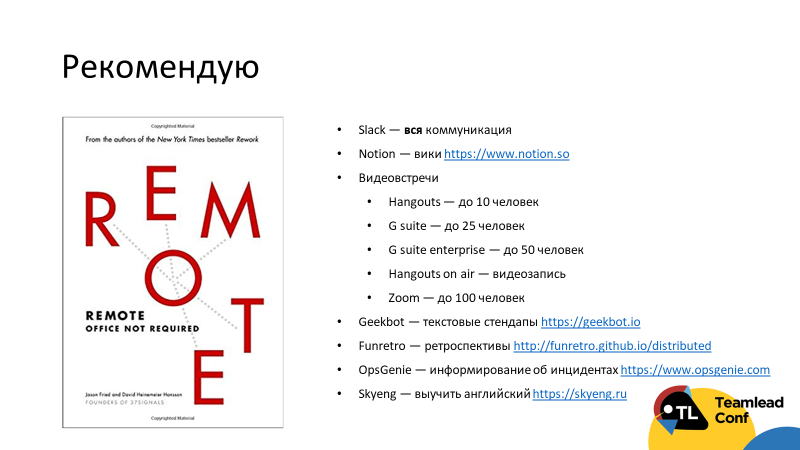
Delegates from the Plesk team, who already came to the conference by the four of them, in their review described the report of Alexey as terrific on the concentration of information. But what they wrote about the conference as a whole:
In early February in Moscow, the Teamlead Conf 2018 conference was held. The event can be said to be significant - it was realized that the problems of your position are fully worthy not only of local meetings or tracks, but also of an independent large conference.
The conference turned out to be interesting, first of all, thanks to the excellent content. We must pay tribute to the organizers: they clearly managed to gather the right audience and the right speakers.
This conference definitely wants to be categorized when you return to work and analyze them by building blocks, rethink heard reports, are ready to try new ideas, experiment and improve development processes. The goal “to gain experience and inspiration” is achieved at 100%.
Develop imperially
The matrix of competence , of course, can be perceived by employees as a critical tool for suppression, one of many documents that must be completed and forgotten as soon as possible and how horrible it is. In Lazada, they wanted to use it in such a way that no one had the feeling that it was a tool for suppression, but just to help good people to develop themselves .
The techno-hub in Moscow appeared two and a half years ago and began to grow very quickly, many new people came who needed to rally and become a single team - the use of the competence matrix was also partly aimed at solving this problem.
Nina Scheglova, in her report, told us exactly which skills were included in the matrix for the team leader, why there are only soft skills , and what the rules of the game are. To make it clearer, consider an example: flexible thinking falls into the category of “Analysis and Decision Making”.

The first level of ownership is characterized by the fact that a person is simply able to look at a problem from the other side , when you are still just a junior team leader for you, this is a big step. Being at the second level of development, he is able to change his own point of view in the presence of arguments and he is very curious. Timlid with the third, highest, level of flexible thinking is incredibly curious, very easily juggling with ideas , combining them, changing points of view, and so on.
The resulting matrix serves to outline a development plan by selecting areas in which it would be interesting and useful to develop further. In order to have a focus and really development, Nina recommends choosing only three areas for several months . On the one hand, it is not forbidden, after some time to change the vector of development, on the other - it helps to substantiate the conduct of some corporate training. So, for example, from Nina’s extremely stylish slides, it is not difficult to guess that the Jedi techniques in Lasad had already been mastered.
Of course, no one denies the subjectivity of this tool, but in the concrete example he showed himself well and coped with his tasks. You can try to use it in your work by adding and customizing for yourself and your tasks:
In the comments to Maxim Tsepkov's post about this report, some controversy arose around the content of the matrix, and also a discussion of the difference between soft skill and hard skill of the manager , which seems appropriate to lead.
Ekaterina Semenova : We didn’t paint the manager’s hard skills - they are very different even within the same company. Somewhere many, many specific tools, and somewhere - macros and Excel programming.
Maxim Tsepkov : Ekaterina, it seems to me that you understand the hard skill of a manager in the IT sense - as the possession of certain IT tools. And I understand them differently, namely, as a professional manager skills. They after all are. That is, the division into soft skill and hard skill is not by whether any technical means are used, but because hard skill is associated with the profession (discipline), and soft skill is independent of it. A manager is a profession, and management is a discipline and it has its own set of hard skills, which are taught by teaching management.
Ekaterina Semenova : Now I understand what you mean. With this interpretation of the concepts it turns out quite interesting. On the one hand, a team leader should have hard skills commands (programming / testing). And maybe you are right when the developer goes to the team - his skill, for example, communication becomes hard skill.
Maxim Tsepkov : There is thin. Take the analyst. He has a soft skill of communication and the ability to write texts, and there is a hard skill of conducting an interview (with fixing the result), in which communication and writing texts is an important part. Probably something similar here.
Ekaterina Semenova : Yeah. And you can apparently pump both skills.
1000 and 1 feedback
The story of Eugenia Goleva from Lamoda was addressed especially to those who are going to teach Timblid feedback skills, but, in fact, was useful to everyone. Even those who confidently raised their hands in response to the question of who gives feedback, have certainly found useful tips for themselves.
The fact that feedback is needed and important has not been discussed - not random people have gathered, everyone understands everything. As well as the fact that the average engineer often criticizes, rarely praises and judges without understanding . And this is not exactly what we would like, because this feedback does not really motivate people, but rather contributes to the emergence of conflicts.
The lack of positive feedback is interpreted as if the person is not appreciated, and he tries to leave the company.
The most obvious solution that comes to mind is training. There are such trainings; in Lamoda, they tried a lot of them and even invented their own feedback model, which they called SAME (Situation, Action, Message, Expectation).

But Eugene came up with this task in the project of the club, which, unlike the training, would be at will , and not as an obligation. Secondly, the club is an event that people go to regularly and for a long time , that is, you can pump different skills gradually. This project was the club of speakers , organized with the filing of employees who themselves wanted to learn how to speak publicly. And inside this club of speakers there was a part about how to give each other feedback in such a way that it was useful.
From the very beginning, the participants realized from their own example that when you were preparing to speak, but in the end there were no questions, no comments, no objections - this is bad, this is unpleasant.
Nevertheless, some resisted, the very idea that they do not beat feedback , that it is necessary for development, is not very common in our culture. And it takes time to get used to the fact that feedback can be useful and you can interact with it and, in fact, when they give you feedback, this is very nice and healthy .
Along the way, formed a few rules that can be adopted. One of them tells you to always find three advantages , but not to sweeten the bitter pill. The most important thing for what a positive feedback is needed, oddly enough, for your own development , because in order to learn from others, you need to be able to look at the work of colleagues and notice some things that you yourself did not think of, remember, and then use .
On the other hand, when receiving feedback, we all often miss the pluses past our ears, but as soon as we are pointed out to some flaw, we take a huge magnifying glass and carefully examine it. Therefore, the ability to correctly receive feedback and not react every time, as the ultimate truth, also needs to be trained.
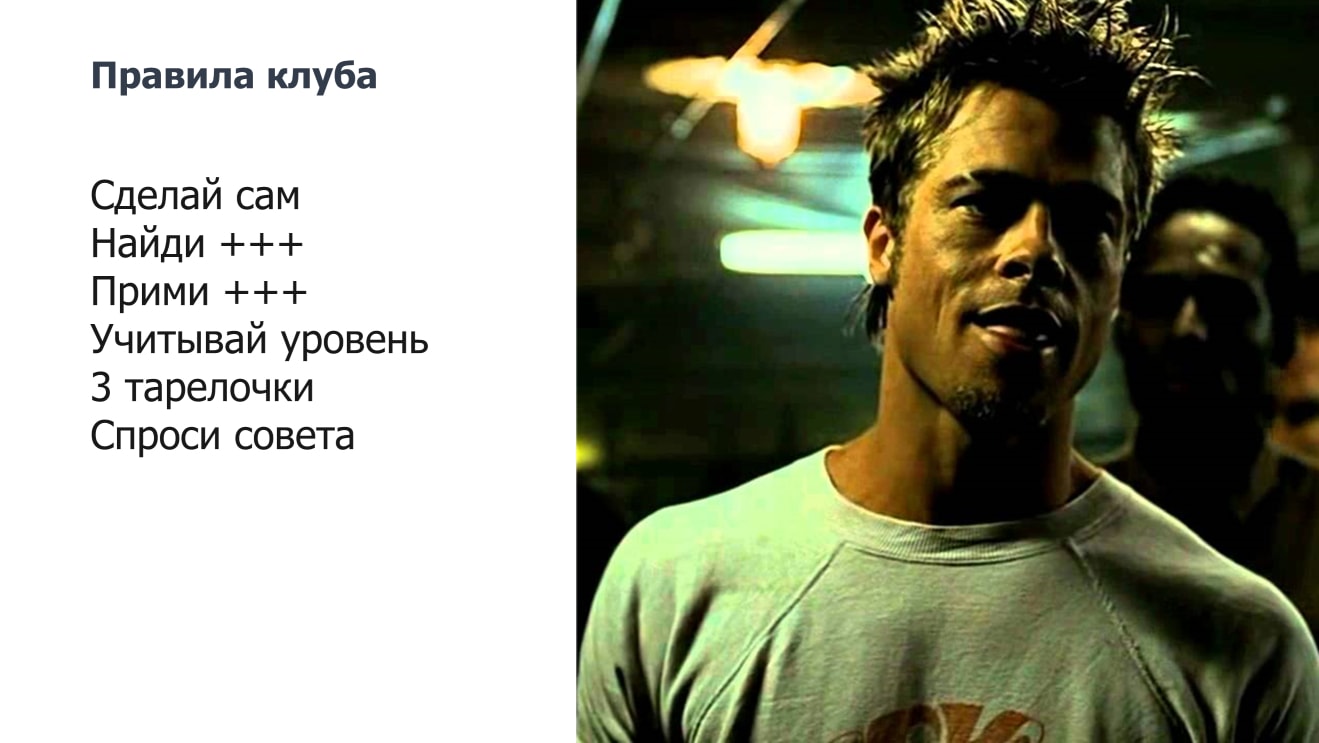
And the rule of three plates , in essence, is the same as in the development plan according to the competence matrix - do not try to immediately correct everything you can, to begin with, choose three zones for development
In a word, the club turned out to be more effective than trainings; its participants not only learned to give and receive feedback, but also by their example gradually charge their colleagues around.
And as a small digression, let us tell you that Eugene in Lamoda serves as a devrel and is a very active participant in our new series of events DevRel Conf . We discuss who it is who they are, what their tasks are, how to solve them, and much more. We have already held three meetings, videos from which are on the site, and are not going to stop.Concluding this diverse review, first of all, we want to mention the Management Channel , playlists of Aletheia Business (conference on the application of psychology in management and business) and Whale Rider (conference on management and entrepreneurship), in which videos of earlier management reports, which I can also refuse useful, and note that the presentations of all the reports of the past TeamLead Conf , unlike the performances themselves, are available to everyone.
And secondly, to remind that conferences are not only reports at all . This is a live communication, the opportunity to: ask, clarify, get to know, share, find colleagues and much more. Especially in such a delicate topic, on which google not to google, but everything is decided all the same by trial and error. As proof that our event was very successful in this sense, there are some photos under the spoiler.
TeamLead Conf Photos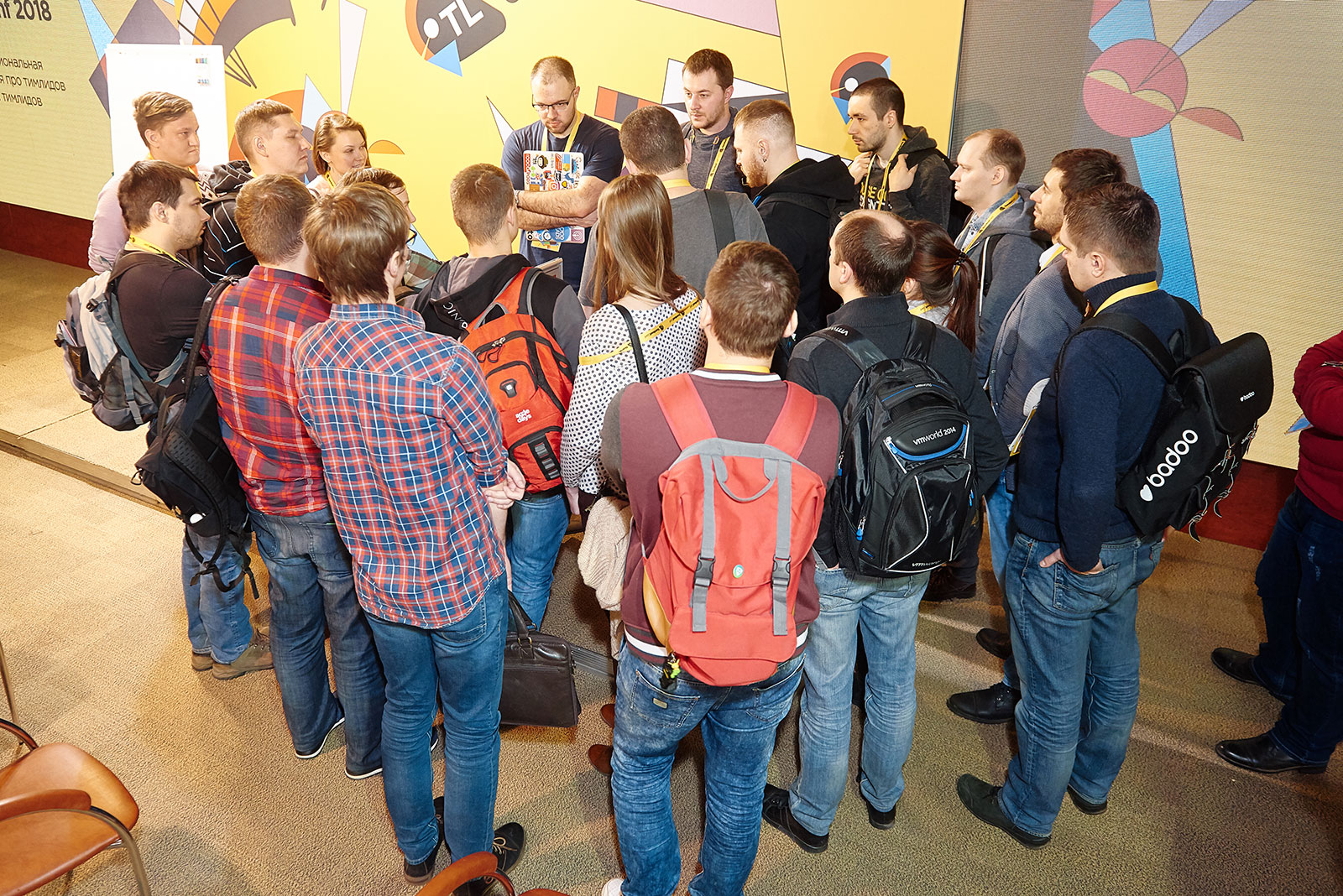
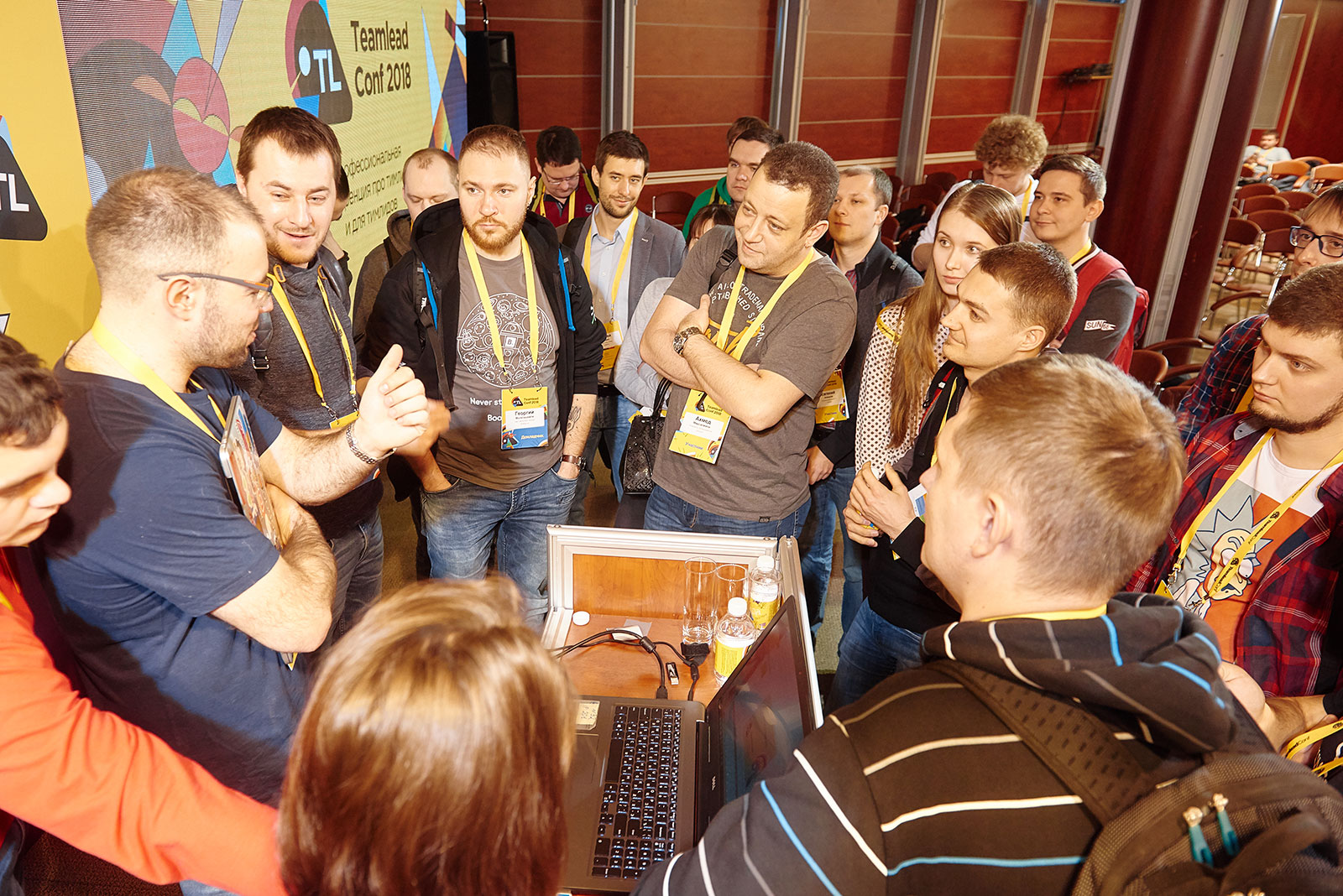
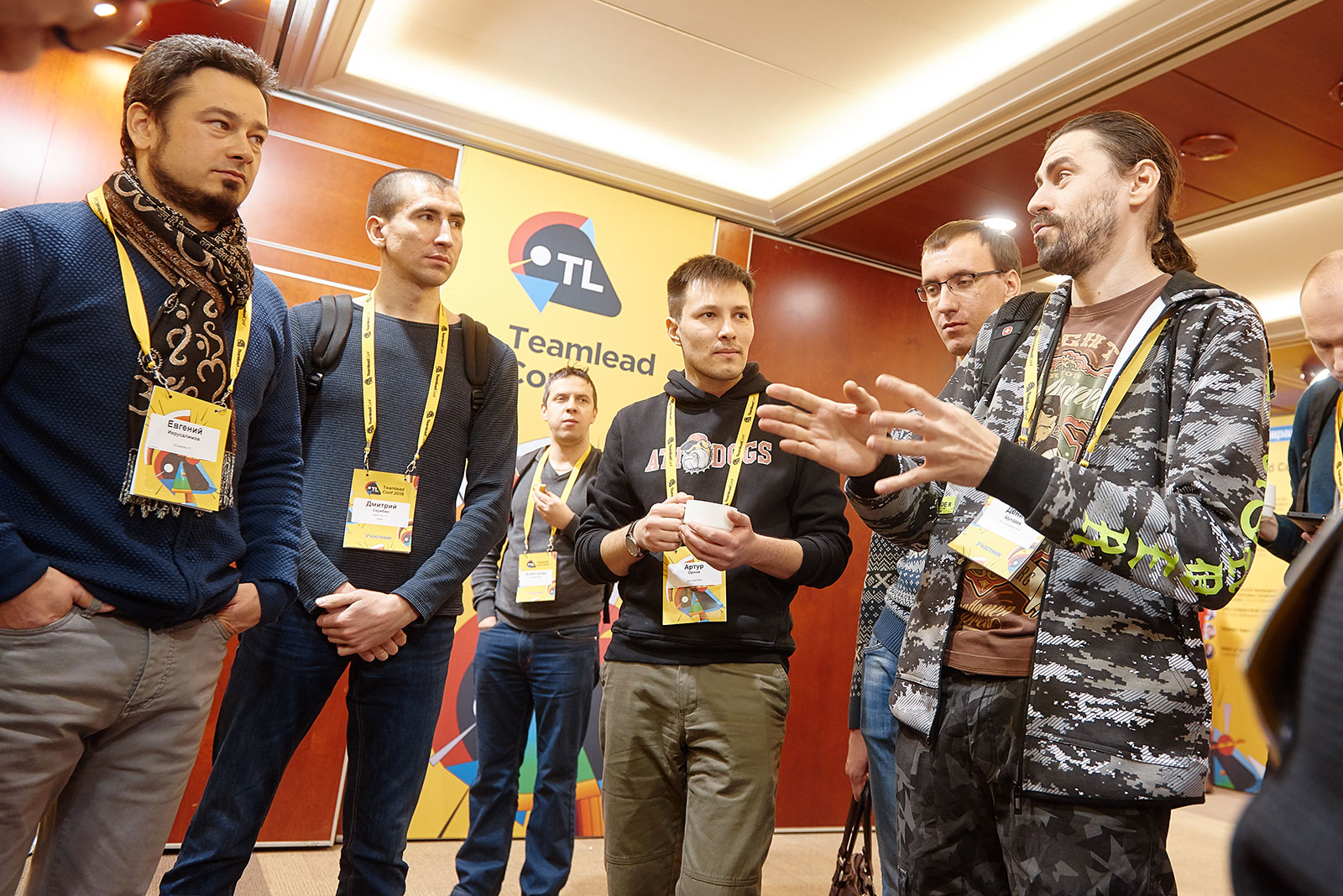
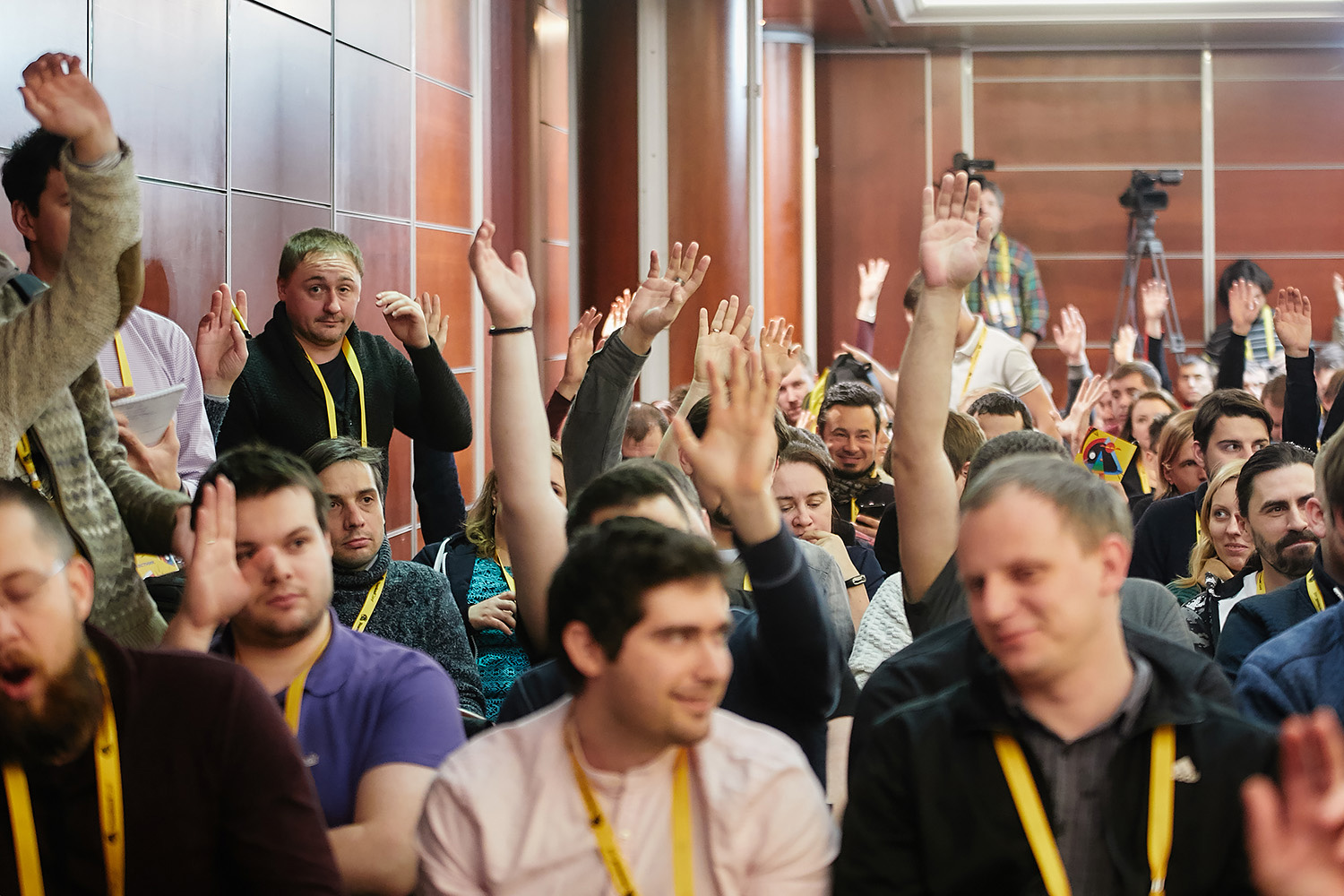

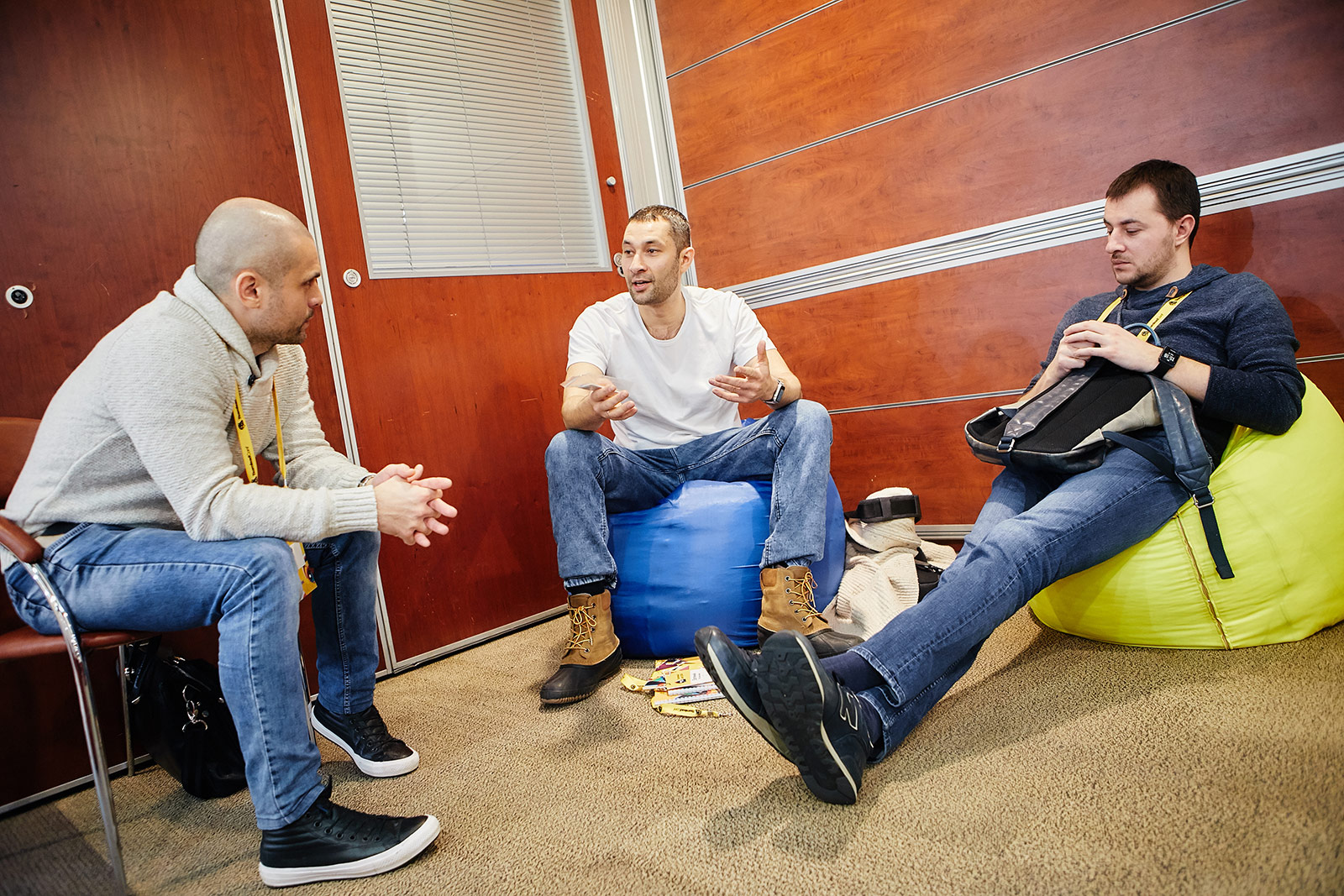

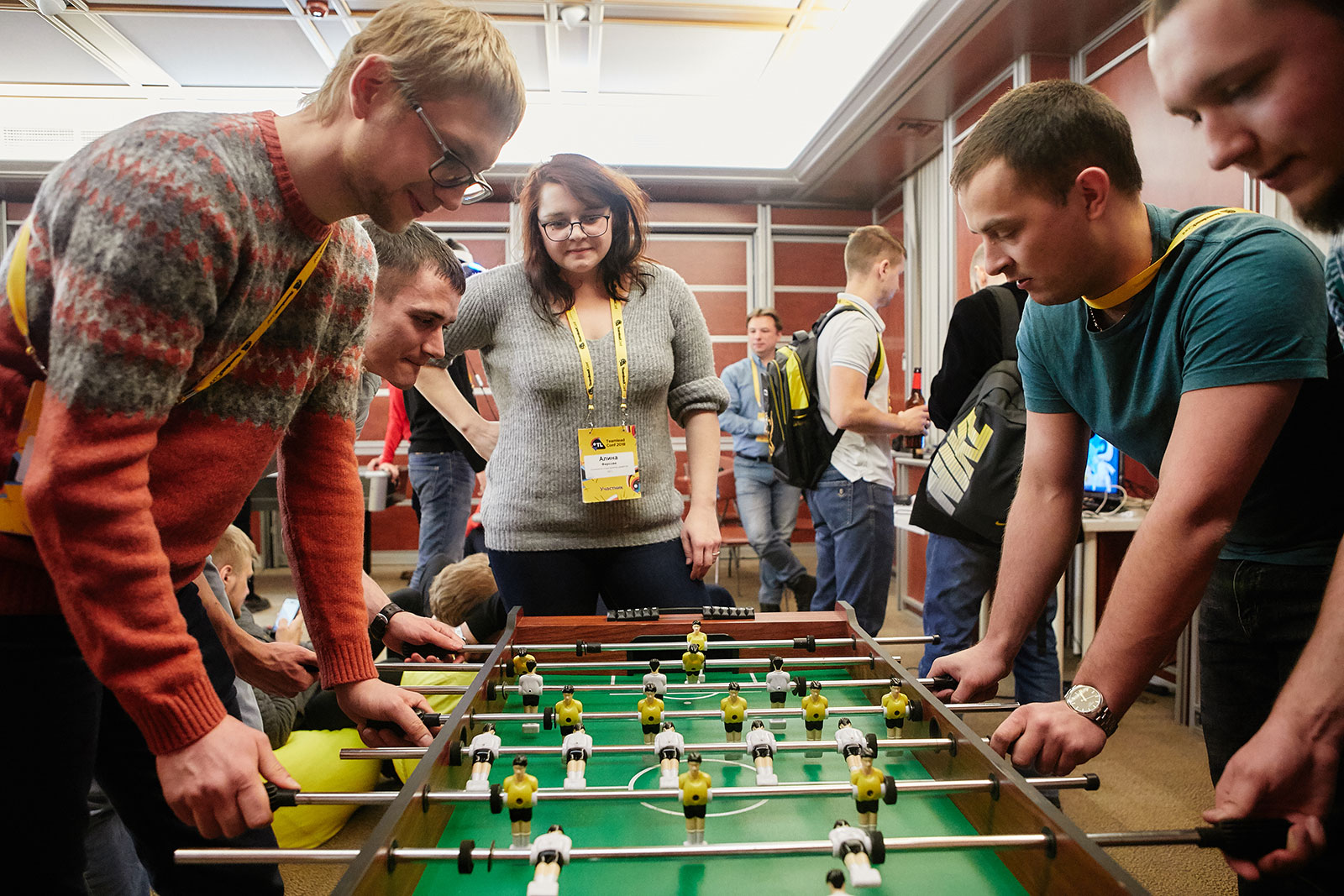

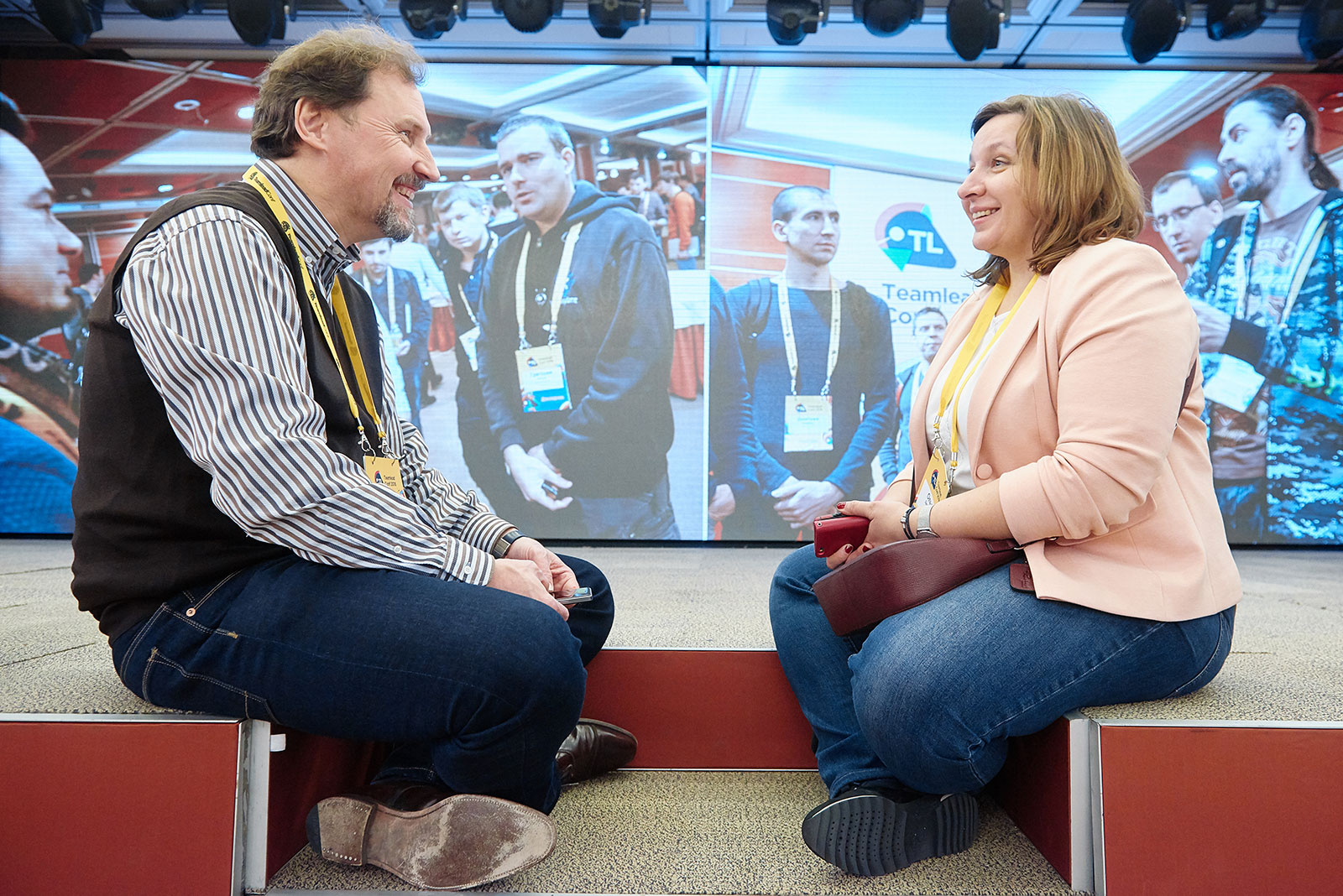












Despite all the efforts of the speakers, it does not seem that the topic has exhausted itself. Reports about the teams and management will be at the nearest RHS ++ and, probably, at the Siberian Highload ++ .
For example, in the list of applications for Whale Rider there are:
Nikita Bykov from Kodix Automotive with the report “The Timlids: fighters or commanders? "And
Vladimir Tolokonnikov (SkyDNS / SafeDNS) with the report “ We need a project! or How to live if you are now PM? ".
On Aletheia Business topics closer to the psychology of management, for example, among the applications:
Georgy Mogelashvili with the theme “ Game of Roles: how we effortlessly solved the problem of staff growth on Booking.com ” and
Vyacheslav Zlobin promises to tell how to train "decision makers" .
Formulate your own tasks, see applications and come to participate. Moreover, we recommend not to postpone the decision until the last moment and to familiarize yourself with the ticket offer , because the price increase has already been launched.
Source: https://habr.com/ru/post/352648/
All Articles